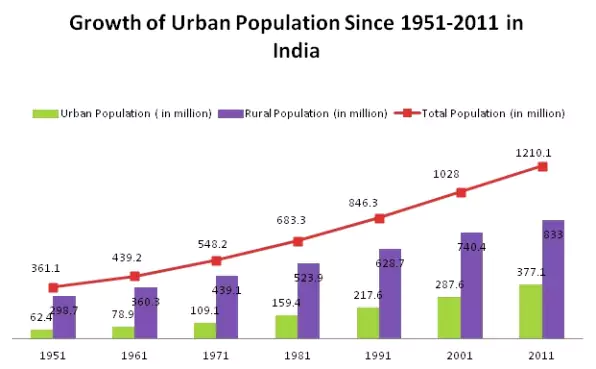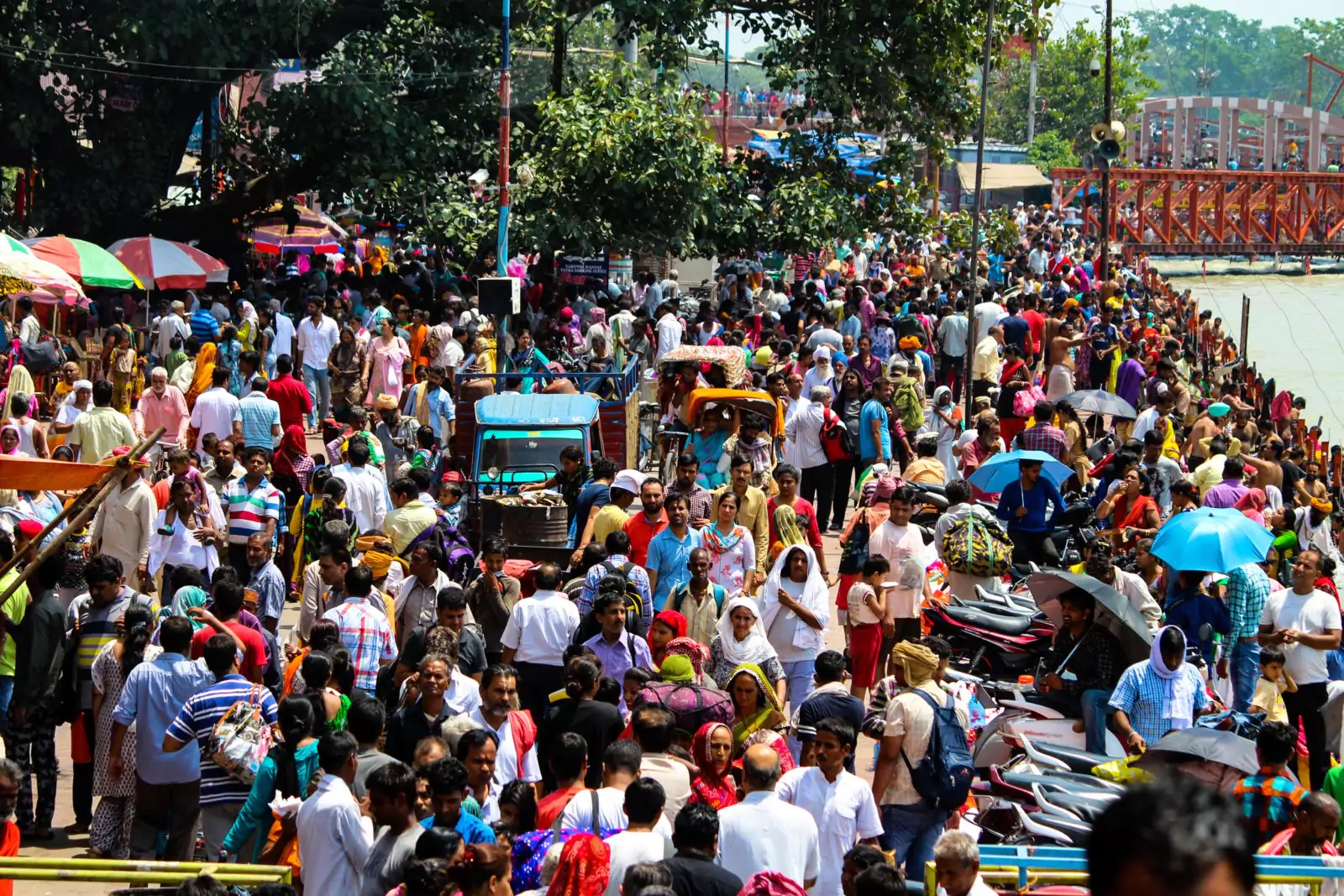India’s Population Growth & Urbanization Issues
Introduction
The world’s population has more than tripled since the mid-20th century, rising from 2.5 billion in 1950 to 8 billion in 2022. This unprecedented growth has reshaped global economies, social structures, and resource distribution, creating both opportunities and challenges.
To address these critical issues, the United Nations Development Programme (UNDP) established World Population Day in 1989, inspired by the "Day of Five Billion" (1987). Since then, this annual event on July 11 has served as a platform to raise awareness about family planning, gender equality, poverty alleviation, maternal health, and human rights.
The theme for World Population Day 2024: "Leave no one behind, count everyone."
This reflects the importance of inclusive development, ensuring that population policies consider marginalized and vulnerable communities while promoting sustainable growth.
- Global Population Trends and Projections
Key Statistics & Milestones
Year World Population Key Developments 1800 1 billion Industrial Revolution begins. 1950 2.5 billion Post-war baby boom, improved healthcare. 1987 5 billion "Day of Five Billion" observed. 2011 7 billion Rapid urbanization, tech revolution. 2022 8 billion Sustainability challenges intensify. 2030 (Projected) 8.5 billion Greater focus on demographic shifts. 2050 (Projected) 9.7 billion Aging population, automation rise. 2100 (Projected) 10.9 billion Stabilization of global growth. Key Factors Driving Population Growth
- Improved Healthcare – Medical advancements have increased life expectancy.
- Declining Infant Mortality Rates – More children survive to adulthood.
- High Fertility Rates in Developing Nations – While fertility rates are declining globally, some countries still have high birth rates.
- Urbanization & Migration – Movement towards cities is reshaping population distribution.
Geographical Impact:
- Africa & South Asia will drive most future population growth.
- Europe & Japan are experiencing population decline and aging issues.
- China’s population has started shrinking due to low fertility rates.
- india’s Population Growth and Its Implications
India’s population surpassed China’s in April 2023, making it the most populous country in the world with over 1.4 billion people.
India’s Demographic Profile
Indicator Statistics Population (2023) 1.425 billion Annual Population Growth Rate 0.8% Median Age 28 years (compared to China’s 38 years) Total Fertility Rate (TFR) 2.0 (near replacement level) Urban Population 35% (expected to reach 50% by 2050) Working-Age Population (15–64 years) 67% Elderly Population (60+ years) 10% (projected 20% by 2050) Key Challenges of India’s Population Growth
- Demographic Pressure – India adds 15 million people annually, straining resources.
- Limited Land & Resources – 17% of the world’s population resides on just 2.2% of its land area.
- Employment Crisis – A large youth population requires massive job creation.
- Urban Overcrowding – Unplanned urbanization leads to slums, pollution, and infrastructure stress.
- Health & Education Gaps – Disparities in healthcare access and literacy hinder progress.
Future Trends:
- India’s population is expected to peak at 1.6 billion by 2065 before gradually declining.
- The working-age population is shrinking in developed nations, offering India a unique opportunity if properly managed.
- India’s Population Policies and Initiatives
National Population Policy (2000)
Objectives:
- Reduce Total Fertility Rate (TFR) to replacement level (2.1).
- Expand access to maternal and reproductive health services.
- Improve contraceptive use and family planning.
- Achieve population stabilization by 2045.
Criticism:
- Overemphasis on contraception instead of poverty alleviation and healthcare improvements.
Population Regulation Bill, 2019
Proposed penalties for families with more than two children,including:
- Disqualification from government jobs.
- Reduced public benefits.
- Restrictions on contesting elections.
Concerns: Seen as coercive and potentially violating individual reproductive rights.
Uttar Pradesh Population (Control, Stabilization,and Welfare) Bill, 2021
Two-child policy enforcement with:
- Incentives for sterilization & contraception.
- Disqualification from elections and jobs for non-compliance.
Debate: While intended to curb population growth, critics argue that education and economic growth naturally lower fertility rates.
- Government Programs for Population Management
Mission Parivar Vikas (MPV)
- Implemented in 146 high-fertility districts across 13 states.
- Expands access to contraceptives and maternal health services.
Expansion of Contraceptive Choices
- New additions: Injectable contraceptives (Antara Programme) and Centchroman (Chhaya).
Compensation Scheme for Sterilization Acceptors
- Financial support for individuals and healthcare providers performing sterilization.
Postpartum Intrauterine Contraceptive Device (PPIUCD) Services
- Immediate contraception after childbirth.
Home Delivery of Contraceptives
- ASHAs distribute contraceptives directly to households.
Family Planning Logistics Management Information System (FP-LMIS)
- Digital tracking system for efficient contraceptive supply management.
- The Way Forward – Sustainable Population Management
Policy Shifts Needed
- From Population Control to Population Management – Investing in human capital instead of coercion.
- Skill Development – Expand vocational training and higher education
- Gender Equality & Women’s Empowerment – Promote delayed marriages and economic participation.
- Healthcare Strengthening – Improve maternal and reproductive health services.
- Urban Planning & Infrastructure – Develop sustainable cities and affordable housing.

Leveraging the Demographic Dividend
India’s working-age population (67%) is an asset, provided:
- Education and employment opportunities are expanded.
- Technological innovation and entrepreneurship are encouraged.
If India invests wisely, it can transform population growth into an engine for economic development rather than a burden.
India’s population boom presents both challenges and opportunities. Effective policy implementation, sustainable urbanization, and human capital development can turndemographic expansion into economic strength.
Instead of focusing solely on population reduction, India must harness its youth potential, improve social infrastructure, and ensure inclusive growth to achieve a prosperous future.













